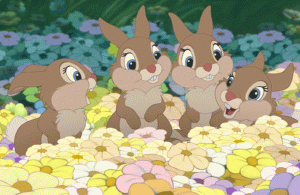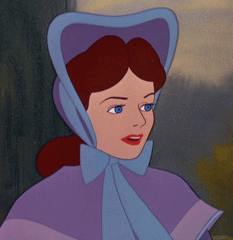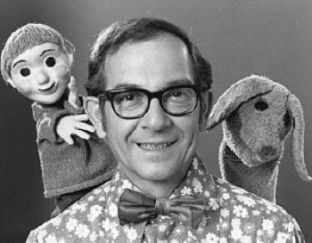 If in the early ‘90s, you were a) between the ages of 7 and 14, b) owned a television, and c) literate, then you probably watched Ghostwriter. Produced by the Children’s Television Workshop (now called the Sesame Workshop) and BBC One, it premiered in the U.S. on PBS on October 4, 1992. Despite its popularity, the show was abruptly cancelled in its third season due to a lack of funding. The final episode was broadcast on February 13, 1995.
If in the early ‘90s, you were a) between the ages of 7 and 14, b) owned a television, and c) literate, then you probably watched Ghostwriter. Produced by the Children’s Television Workshop (now called the Sesame Workshop) and BBC One, it premiered in the U.S. on PBS on October 4, 1992. Despite its popularity, the show was abruptly cancelled in its third season due to a lack of funding. The final episode was broadcast on February 13, 1995.
Ghostwriter focused on a racially diverse group of pre-teen friends who lived in Brooklyn, and solved neighbourhood mysteries with help from an invisible ghost. While much of the young cast’s acting was painful to watch, especially in the earliest episodes (most of the kids were from non-acting backgrounds), the show was a hit with its target audience. It was also lauded by teachers, who praised the series for teaching writing and research skills to young students, and emphasizing the importance of reading.
Generally, the members of the main cast have kept pretty low profiles since the show wrapped almost two decades ago. So, what are they up to these days?
Todd Alexander Cohen (Rob Baker)

After Rob bid farewell to his pals in Brooklyn and left a gaping black hole in my first grade heart, Cohen appeared in a handful of commercials. He attended NYU with fellow cast members Sheldon Turnipseed (Jamal) and Mayteana Morales (Gaby), and graduated in 2002. He now lives in Los Angeles, where he works at the William Morris talent agency.
Blaze Berdahl (Lenni Frazier)

While Berdahl continued to perform in commercials, soap operas, and New York theatre after saying goodbye to the Ghostwriter Team, it was voiceover work that appealed to her the most. In 2006, Berdahl became the voice of “Swiffer” products. Most recently, her voice has been featured in commercials for Subway restaurants, Bermuda Tourism, and the Ford Focus. With a steady supply of work to keep her busy, I guess we shouldn’t expect her to release a remix album of Lenni’s “You Gotta Believe” anytime soon.
David Lopez (Alejandro “Alex” Fernandez)

Queens-born, Colombia-raised Lopez attended Rutgers University in 2002, and hopefully graduated. In 2004, he lent his voice to a character in the Grand Theft Auto: San Andreas video game. He has since returned to Colombia, and probably has a very happy wife.
Mayteana Morales (Gabriela “Gaby” Fernandez)

Mayteana graduated from NYU in 2003 with a degree in dramatic arts. She is now part of funk/R&B/jazz/reggae/fusion/hip-hop/soul group The Pimps of Joytime.
Tram-Anh Tran (Tina Nguyen)

After graduating with a degree in finance from Penn State University in 2001, Tram guest-starred on Lifetime’s Zoe Busiek: Wild Card in 2004. She seems to have made her family her top priority, crushing the souls of Alex/Tina shippers everywhere.
Sheldon Turnipseed (Jamal Jenkins)

Sheldon has fallen off the radar entirely. Maybe Ghostwriter can track him down.
William Hernandez (Hector Carrero)

At age 15, William left home because his family did not accept his homosexuality. He continued acting, and landed parts in various obscure movies. In 2004, he was part of the cast the Philadelphia season of MTV’s The Real World.
Lateaka Vinson (Casey Austin)

Vinson, who played Jamal’s annoying little cousin, traded in her knock-knock joke books for university textbooks. She completed her Masters in speech pathology at Hampton University.
Melissa Gonzales (other Gaby)

Melissa took over the role of Gaby for the final two story arcs of the series. She has since been seen as “girl two in bathroom” in a 1999 movie nobody saw called Light It Up.
Several recurring and one-shot characters in Ghostwriter have had relatively successful careers in film and television. Julia Stiles, who played an intense young hacker in a fleece hat in season 2, went on to become a Hollywood actress and it girl in the early 2000s. She also graced the cover of my very first issue of Seveteen in September 2000.
Jamal’s father was played by Samuel L. Jackson. I hear he’s had a few roles here and there.
Unfortunately, time has not been kind to Ghostwriter. Because of its “real world” setting, and heavy dependence on computers (through which the team “spoke” to the titular character much of the time), the show is now painfully dated. Still, that didn’t keep Shout! Factory from releasing the first season on DVD last year.
Ghostwriter was a gem of a show from a time many (well, I) consider to be the golden age of children’s programming. It was an educational program, but never pandered to its viewers, never laid on the lessons too thickly. Its (for the most part) amateur cast may not have been destined for Oscar-winning roles in the future, but they portrayed their characters to the best of their ability, and with total sincerity.
Due to the fact that most kids have access to the entire world at their fingertips thanks to the Internet and cell phones—neither of which were very sophisticated or mainstream when Ghostwriter was on the air—a reboot of the series would prove to be an incredible challenge for producers. Who needs Ghostwriter when you can text? No need to follow suspects around the city when you can gather all the information you need on them via Facebook. Mysteries could be solved with a single Google search. Ghostwriter was a product of its time, and maybe it’s best left there, along with Alex’s striped Hammer pants.





































